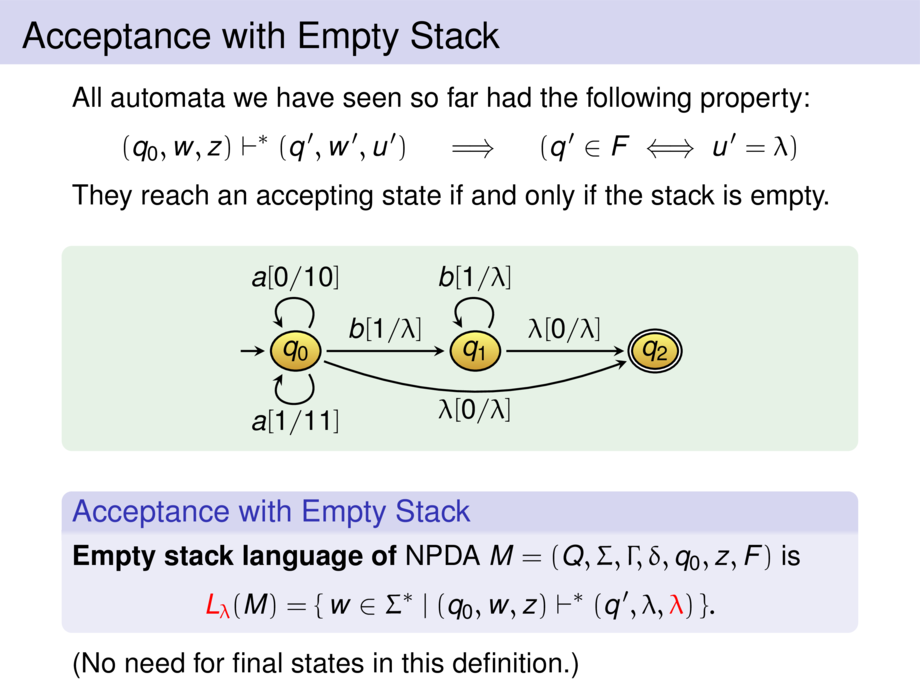



































































































47/162
\begin{frame}{Acceptance with Empty Stack}
All automata we have seen so far had the following property:
\begin{talign}
(q_0,w,z) \vdash^* (q',w',u') \quad\implies\quad (q' \in F \iff u' = \lambda)
\end{talign}
They reach an accepting state if and only if the stack is empty.
\medskip
\begin{exampleblock}{}
\begin{center}
\input{tikz/npda1.tex}
\end{center}
\end{exampleblock}
\medskip\pause
\begin{block}{Acceptance with Empty Stack}
\emph{Empty stack language of} NPDA
$M=(Q,\Sigma,\Gamma,\delta,q_0,z,F)$ is
\begin{talign}
\alert{L_\lambda}(M) = \{\, w \in \Sigma^* \mid (q_0,w,z) \vdash^* (q',\lambda,\alert{\lambda}) \,\}.
\end{talign}
\end{block}
(No need for final states in this definition.)
\end{frame}

